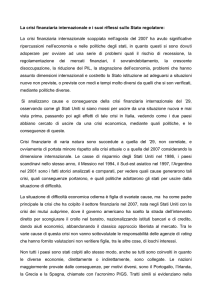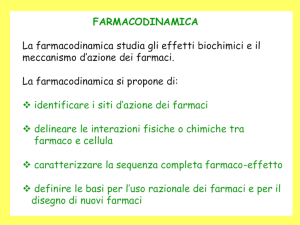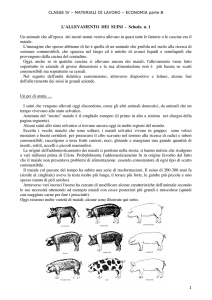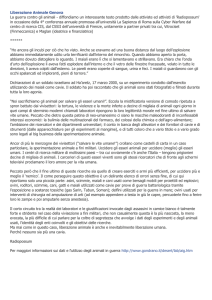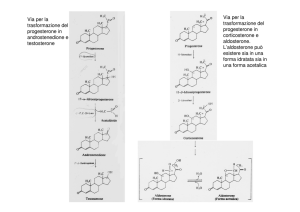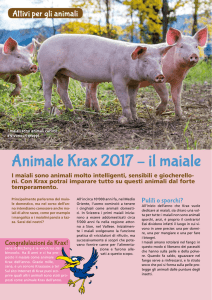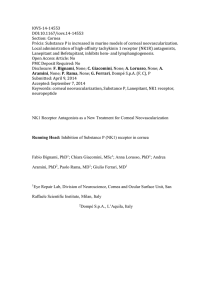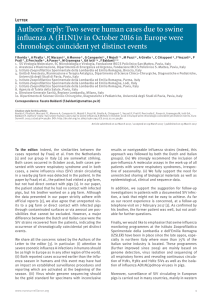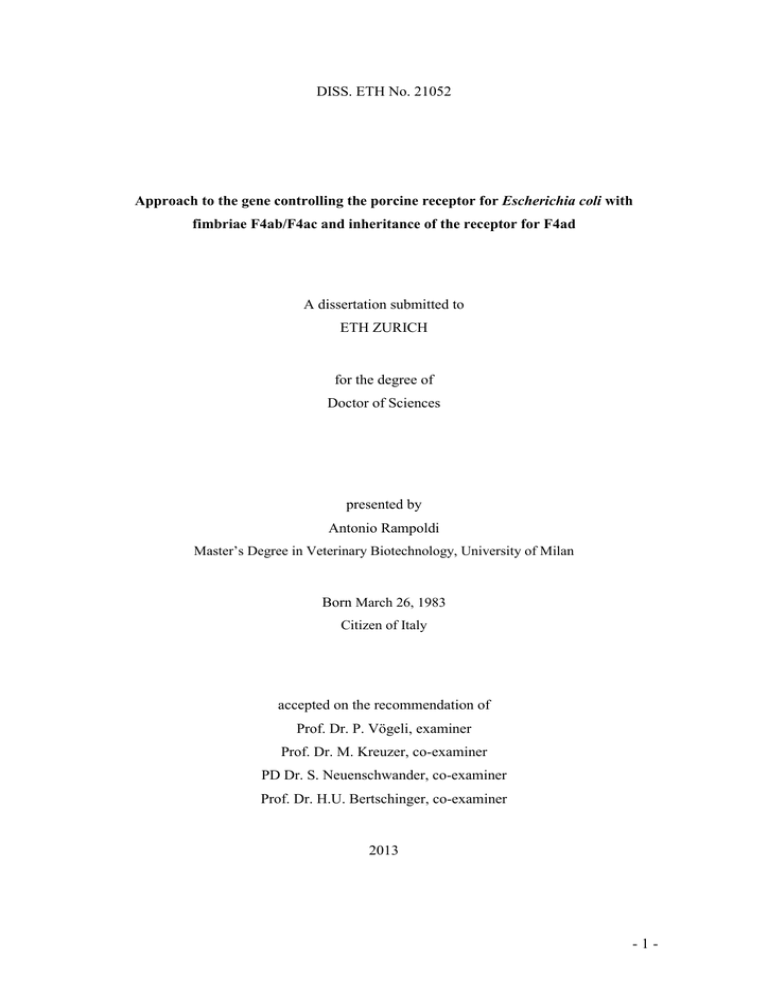
DISS. ETH No. 21052
Approach to the gene controlling the porcine receptor for Escherichia coli with
fimbriae F4ab/F4ac and inheritance of the receptor for F4ad
A dissertation submitted to
ETH ZURICH
for the degree of
Doctor of Sciences
presented by
Antonio Rampoldi
Master’s Degree in Veterinary Biotechnology, University of Milan
Born March 26, 1983
Citizen of Italy
accepted on the recommendation of
Prof. Dr. P. Vögeli, examiner
Prof. Dr. M. Kreuzer, co-examiner
PD Dr. S. Neuenschwander, co-examiner
Prof. Dr. H.U. Bertschinger, co-examiner
2013
-1-
SUMMARY
The ability to colonise the intestine is a common feature of both pathogenic and non-pathogenic
bacteria. Enterotoxigenic E. coli (ETEC) is the major cause of diarrhoea and death among piglets. The
bacteria adhere to specific receptors on the brush borders of enterocytes by adhesive fimbriae, and they
subsequently produce toxins that stimulate diarrhoea. There are no more than five fimbrial types
described worldwide in vivo, among which F4 is the most prevalent in the world. The F4 fimbrial type
has three antigenic variants—F4ab, F4ac and F4ad—that vary in their receptor specificities.
In pigs, resistant or susceptible phenotypes for fimbriae F4ac are inherited as monogenetic traits,
the susceptible allele being dominant over the resistant one. The receptor for F4ac binds F4ab as well.
Genome scans with microsatellites have localised the ETEC F4ab/F4ac receptor gene (F4bcR) to a region
of pig chromosome 13 (SSC13), SSC13q41-q44. Mucin 4 (MUC4) and mucin 13 (MUC13) genes have
been mapped in SSC13q41-q44, and they co-segregate mostly with the F4bcR alleles. SNPs derived from
these two genes are being used in breeding programs to reduce the frequency of the susceptible allele for
ETEC F4ab/F4ac in the pig population.
In this study, selected pigs from the Swiss Performing Station (SPS) in Sempach and from the
university experimental herd (UEH) at the University of Zurich were found to be recombinant in the
MUC4-F4bcR or F4bcR-MUC13 intervals.
A three-generation study was performed on 32 selected pigs from UEH, recombinant in the
MUC4-F4bcR interval, with the use of the Porcine SNP60 DNA BeadChip. DNA of a pig recombinant in
the F4bcR-MUC13 interval was sequenced with high throughput techniques, using HiSeq 2000 and
PacBio RS platforms.
RNA samples of pigs resistant and susceptible to ETEC F4ab/F4ac were sequenced with a
SOLiD platform. Analyses were performed to investigate the expression and possible mRNA variation of
candidate genes’ HEG homolog 1 (HEG1), solute carrier family 12 member 8 (SLC12A8), MUC13, and
integrin β-5 (ITGB5) in the region SSC13q41-q44 in the small intestine.
Markers were tested in both susceptible and resistant pigs, looking for a linkage disequilibrium
(LD) with F4bcR. GeneScan analyses were performed on microsatellites. PCR-RFLP and pyrosequencing
were performed on SNPs with possible LD with F4bcR.
-8-
The data obtained in this study have led to a further narrowing down of the locus of F4bcR to
exon 2 of MUC13 and to the discovery of several markers with high LD with F4bcR, to be used in
breeding programs: ALGA0072075, KVL1293, ALGA0106330, MUC13-226, and MUC13-813.
The inheritance of the receptor or receptors for F4ad instead is not well understood. Aside from
the fully resistant and susceptible adhesion phenotypes, such as the ones seen in F4ac and F4ab, some of
the UEH pigs showed a third phenotype in the adhesion tests, in which only some of the enterocytes
examined were without bacteria. In this weak susceptible phenotype, the enterocytes seem to become
more susceptible to F4ad the closer they get to the ileocaecal valve.
Analyses revealed that there is more than one receptor for ETEC F4ad fimbriae on the surface of
the enterocytes—a strong receptor, responsible for full adhesion phenotype (E1), and a weak receptor,
responsible for the low adhesion phenotype (E2).
Adhesion tests were performed on 489 pigs from UEH to determine the receptor phenotype for
ETEC F4ad. Statistical analyses were performed with Pedigree Analysis Package v. 4.0 software to
evaluate possible models of inheritance for ETEC F4ad receptor.
Results indicate that the E1 phenotype might be encoded by two complementary or epistatic
genes, while the E2 phenotype is inherited as a dominant monogenetic trait.
-9-
SOMMARIO
L’abilità di colonizzare l’intestino è una caratteristica comune di batteri patogeni e non-patogeni.
Enterotoxigenic E. coli (ETEC) è la maggior causa di diarrea e morte fra i lattonzoli. I batteri
aderiscono a specifici recettori sull’orletto a spazzola degli enterociti tramite fimbrie adesive, e
successivamente producono tossine che stimolano la diarrea. Esitono non più di cinque tipi di fimbrie nel
mondo, tra cui F4 è la più prevalente. La fimbria F4 possiede tre varianti antigeniche—F4ab, F4ac e
F4ad—che differiscono nella loro specificità verso i recettori.
Nei maiali, i fenotipi di resistenza o suscettibilità alle fimbrie F4ac sono ereditati come un
carattere monogenetico, l’allele per la suscettibilità è dominante verso quello per la resistenza. Il recettore
per le fimbrie F4ac lega anche le F4ab. Genome scan di microsatelliti hanno localizzato il gene recettore
per ETEC F4ab/F4ac (F4bcR) in una regione del cromosoma 13 del maiale (SSC13), SSC13q41-q44. I
geni mucin 4 (MUC4) e mucin 13 (MUC13) sono stati mappati in SSC13q41-q44, e co-segregano
generalmente con gli alleli di F4bcR. SNP derivati da questi due geni sono utilizzati in programmi di
riproduzione per ridurre la frequenza dell’allele per la suscettibilità all’ETEC F4ab/F4ac nella
popolazione suina.
In questo studio, maiali selezionati dalla Swiss Performing Station (SPS) in Sempach e da una
mandria sperimentale (UEH) dell’Università di Zurigo sono risultati ricombinanti negli intervalli MUC4F4bcR o F4bcR-MUC13.
Uno studio su tre generazioni è stato fatto con 32 maiali selezionati dalla UEH, ricombinanti
nell’intervallo MUC4-F4bcR, tramite l’uso del Porcine SNP60 DNA BeadChip. Il DNA di un maiale
ricombinante nell’intervallo F4bcR-MUC13 è stato sequenziato con tecniche high throughput, usando le
piattaforme HiSeq 2000 e PacBio RS.
Campioni di RNA da maiali resistenti e suscettibili all’ETEC F4ab/F4ac sono stati sequenziati
usando la piattaforma SOLiD. Le analisi sono state condotte per investigare l’espressione dell’mRNA e
possibili sue variazioni nell’intestino tenue sui geni candidati HEG homolog 1 (HEG1), solute carrier
family 12 member 8 (SLC12A8), MUC13, ed integrin β-5 (ITGB5) mappati nella regione SSC13q41-q44.
- 10 -
I marker sono stati testati sia in maiali suscettibili che resistenti, cercando un disequilibrium da
linkage (LD) con F4bcR. GeneScan sono state eseguite su microsatelliti. PCR-RFLP e pyrosequencing
sono state eseguite su SNP con un possible LD con F4bcR.
I dati ottenuti in questo studio hanno ristretto il locus di F4bcR nell’esone 2 di MUC13 e portato
alla scoperta di diversi marker con un alto LD con F4bcR, da poter essere usati nei programmi di
riproduzione: ALGA0072075, KVL1293, ALGA0106330, MUC13-226, e MUC13-813.
L’eredità del recettore o dei recettori per F4ad invece non è ancora compresa. A parte i fenotipi
completamente resistenti o suscettibili all’adesione, come quelli osservati in F4ac e F4ab, alcuni maiali
dell’UEH mostravano un terzo fenotipo nei test di adesione, in cui solo alcuni degli enterociti esaminati
erano senza batteri. In questo fenotipo debolmente suscettibile, gli enterociti sembrano diventare più
suscettibili a F4ad più vicino sono alla valvola ileocecale.
Le analisi hanno rilevato che vi è più di un recettore per le fimbrie ETEC F4ad sulla superficie
degli enterociti—un recettore forte, responsabile per il fenotipo con una completa adesione (E1), e un
recettore debole, responsabile per il fenotipo con una bassa adesione (E2).
Test di adesione sono stati effettuati su 489 maiali dell’UEH per determinare il fenotipo del
recettore per ETEC F4ad. Le analisi statistiche sono state effettuate con il software Pedigree Analysis
Package v. 4.0 per valutare possibili modelli di ereditarietà per il recettore ETEC F4ad.
I risultati indicano che il fenotipo E1 può essere codificato da due geni complementari o
epistatici, mentre il fenotipo E2 è ereditato come un tratto dominante monogenetico.
- 11 -

